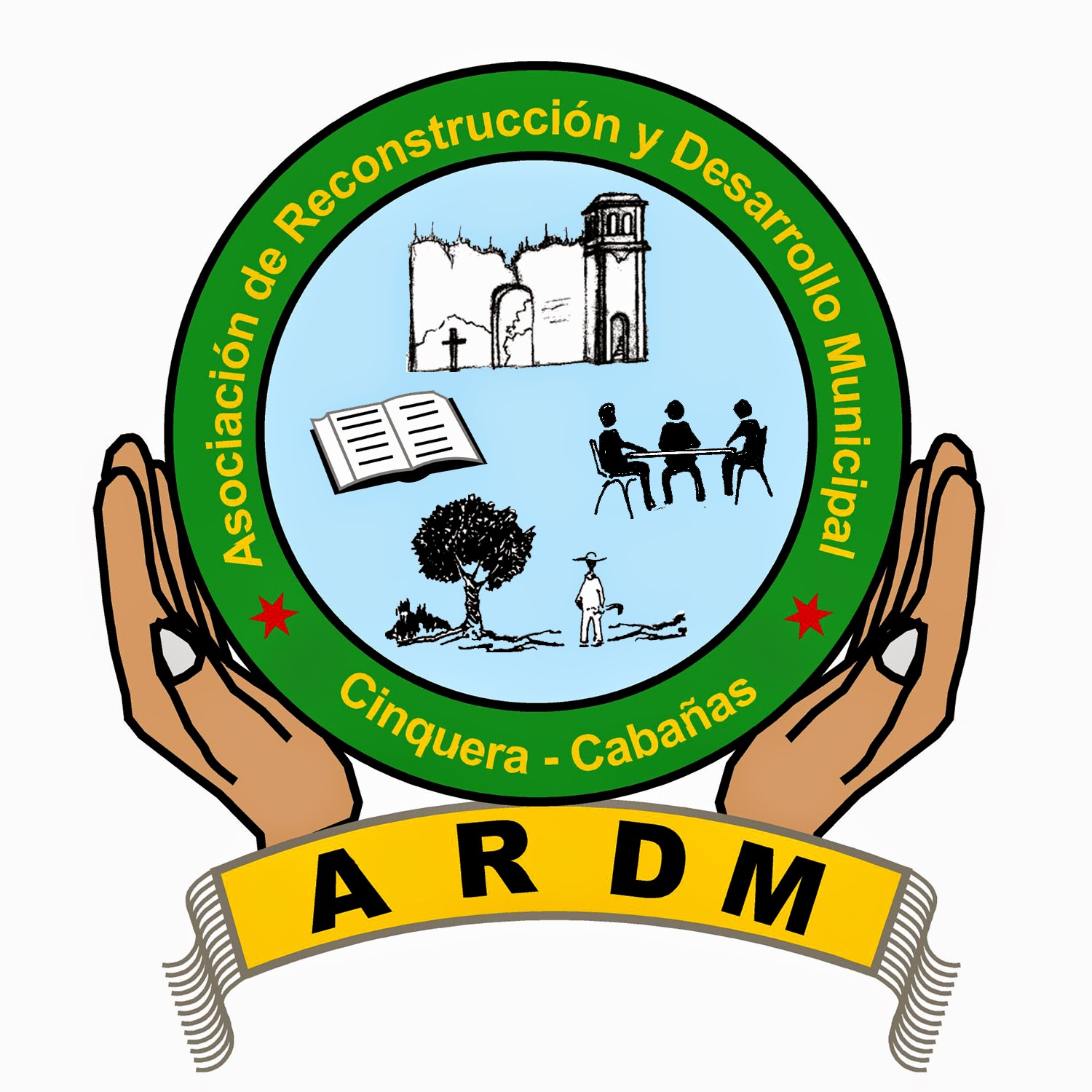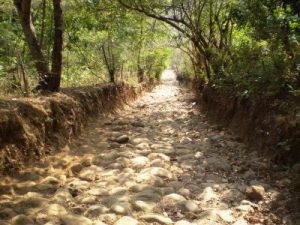Community Development Projects, CRIPDES Regional Support
Update from Cinquera, March 1, 2007
March 1, 2007
ARDM-Cinquera Monthly Update #4
Introduction:
This is the fourth in the series of monthly updates on the work of the Association for Reconstruction and Municipal Development (ARDM) and the social, political, economic and cultural panorama in Cinquera. The ARDM, with support from U.S.-El Salvador Sister Cities local staff, has decided to share in this format news about its activities as well as reflections, reactions and analysis. These updates are written first and foremost to share with Cinquera’s Sister City of Chicago, but should also be suitable for general distribution. Information was presented to me in an informal and open style, this time I sat down with Manuel Reynado, the current President of the ARDM board as well as sistering and youth organizer, and Augustin Pio Valle, recently elected to the ARDM board. Accompanying them were Flor and Maybelin, the 2 young women selected by the ARDM to carry out the institutional communications project, putting information together to give out to solidarity relationships and local communities. The information share corresponds to the work done in the month of February, 2007.Jesse Kates-Chinoy,
Sister Cities E.S. Staff
Environmental Organizing
On February 16th the ARDM helped to celebrate International Wetlands Day with educational activities about how the CinqueraForest protects Lake Suchitlán below it, an artificial lake created by the hydroelectric dam on the LempaRiver. The CinqueraForest contributes in large part to retain much of the silt and mud that will eventually fill up the lake and damage the energy-production capacity of the dam. The dam and lake, one of the most important energy production sources for the country, is owned by the electric company, CEL. At the celebration of International Wetlands Day the representatives from the CEL said that they “thank the people of Cinquera for helping to protect the lake, but recognize that the protective effects of the forest on their investment is ´minimal.´” The ARDM thinks otherwise, and suggests that the CEL denies the need for the forest above the lake because of economic motives: CEL owns not only the dam, but also the wetlands that are for part of the year covered by water, and for part of the year rented for cash crop agricultural production.
Moreover, the CEL rents the land for agricultural production cheap, to friends and business partners. These intermediaries in turn raise the price an average of 700% to rent it to the producers in Cinquera and surrounding villages. The ARDM has been trying to negotiate with the CEL to allow the community producers to work directly on the land, specifically the producers that own land that is a part of the Cinquera forest, as an alternative to cutting down their land and planting within the forest. The concept is that by allowing the communities to produce on the wetlands the CEL protects its own energy-producing capacity. The negotiations have been thus far unsuccessful, and the ARDM is looking to mount a larger campaign with the communities to push the CEL.
As a part of the project Cuscatlán-Cabañas Micro-Region funded by the European Union the ARDM is organizing and taking part in a series of workshops about environmental development practices, and the organizers and community forest rangers are taking part. Also, the ARDM is working with several environmental specialists to carry out a study to catalogue the flora and fauna of the forest throughout its 5 municipality extension over the course of the next 9-12 months.
Also coming up soon, the ARDM continues to organize around preservation of native seed, and are putting on a Community Native Production Fair, where local farmers can present and sell their crops and small harvests grown from native seed, as a way of promoting the protection and use of native seed.
Tourism
The ARDM is working this month on improving the tourist park in a portion of the forest. To do this, the forest rangers, with the help of the rest of the community, are improving the pathways and information available at different stops and stations. Work has also begun at the swimming hole at the bottom of the trail system: they have diverted the flow of water and are deepening the hole as well as creating a water retention system to prevent erosion and make a better pool. The funding for this comes out of the EU Micro-Region project.
Also a supported by the EU Micro-Region project, the community of Cinquera has put together Youth Environmental Brigades. These youth brigades are getting training on how to manage and extinguish forest fires, and are receiving equipment to be a firefighting group in the community, and are mobilizing the community in cleanup campaigns.
Millennium Challenge Account
The community of Cinquera, the ARDM and Mayor’s office are all in discussion about how to respond to the approval of a multi-million dollar grant to the Government of El Salvador called the Millennium Challenge Fund. The U.S. State Department’s Development aid branch, the Millennium Challenge Account (MCA), approved a 461 million dollar grant to the Government of El Salvador. According to Salvadoran President Tony Saca, this aid will be used in large part to revitalize the economies of the northern part of El Salvador, and more than half of the funds will be destined to build transportation infrastructure, primarily in a superhighway to cut through the northern third of the country, a corridor connecting El Salvador with Guatemala in the West and Honduras in the East
At first glance, anyone would agree that road improvement in that area of the country is a necessity. But who will benefit from the latest US aid and policy implementation? The MCA funds are part of a larger economic plan for Central America, the Inter-American Development Bank’s (IDB) Plan Pueblo Panama, a regional free trade industrialization plan which calls for mega highways, new hydroelectric dams and telecommunication privatization, amongst other things. El Salvador and Chalatenango happen to lie right at the heart of this transportation corridor for free market trade, yet for the people of the communities of the CCR, the MCA grant is hardly a jackpot.
One important piece of the MCA puzzle is that 60% of the funds are donation, and 40% must be produced locally as a project counterpart. Cinquera is working on analyzing both what political stance they should take on the impact of the MCA counterproposals on their economy, as well as what projects and proposals they should promote as recipients of the MCA funds coming to their part of the country. These proposals include paving the road from Cinquera to Suchitoto and in the other direction from Cinquera to Tejutepeque, as well as promoting tourism proposals.
Youth Organizing
There has been a flurry of activity in youth organizing this past month in Cinquera and the surrounding communities. In addition to holding the regular monthly meetings to support the organizational processes with youth groups in the communities, the ARDM has begun to have monthly workshops with young children in each of the communities of the Municipality, together with folks from the mayors office, to talk about community and human values.
In the town of Cinquera, the ARDM and the Mayor’s office are putting together a youth music group. This group of about 20 young people are teaching each other to play various instruments, with some outside musical guidance as well, with the goal of forming a youth band in the near future.
The ARDM and Youth Community Radio group have finished building and equipping their radio broadcast room. They are now working on creating more and different programming, after a thorough survey of the community. The survey is important because the radio, broadcast every day from 5-7, cannot be turned off, as it is played over speakers mounted all throughout the community, and directly connected to the broadcast room. The community survey said that people enjoyed the programming, and wanted more of it! So the young DJs and other radio volunteers are putting projecting putting together a weekly news summary, more promotion of local activities, and other new programs.
The radio project in Cinquera has also begun to coordinate with a group effort called KOPAR, which is a coalition of local community run tv and radio stations. The coordination with KOPAR opens up possibilities of getting support for improving some of the radio equipment through other donors. The Cinquera radio project has decided to pursue some of that support to upgrade equipment and be able to donate some of their own equipment to start a sister radio project in neighboring community of San Nicolas, still in the municipality of Cinquera.
Institutional Communications Project:
The institution communications project from the ARDM is up and running, with Maybelin and Flor helping to put together informational bulletins and updates. They have created a written bulletin, which they are condensing to be able to print and distribute widely, and they have put together audio programs about the work of the ARDM to broadcast over the radio. They are also designing and maintaining a web page.
Community Organizing
As yet another piece of the E.U.- MicroRegion project, the directive council members from each of the community organizations from each of the 5 municipalities that make up the Micro-Region, ARDM being one, have put together a series of trainings for themselves. The monthly trainings so far have been centered on themes such as “History of the Salvadoran Social Movement,” and “The Constitution of El Salvador.” They are an important piece of education for these directive boards, which are made up of people from the communities themselves, elected every 2 years.


